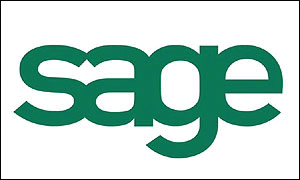This is the last column that will be called “The Peachtree Perspective.” Although Sage Peachtree is one of the first names in accounting software (from the perspective of its stature in the industry, as well as its long history), the world has changed since Peachtree was an independent software company that created software to run on the Osborne personal computer. During the last 13 years, however, Sage Peachtree has been part of the Sage family of solutions, a large organization which has strong products in many markets — Sage ACT! and Sage Simply Accounting on the low end, Sage ERP MAS 90/200, Sage ERP Accpac, Sage Abra, and Sage CRM in the mid-range space, and Sage ERP X3 and Sage SalesLogix to serve enterprise customers.
The world has changed, however. Businesses now demand that business applications work better together, and we demand that large organizations function like one small, nimble business instead of as a series of loosely connected silos. We demand this because the world expects more from businesses today. Sure, every startup doesn’t need office space and a $10,000 phone system, but we are also expected to be accessible 16 hours a day (or more), and we are required to do much more with fewer resources. Accordingly, the name Peachtree, as well as other names like Simply Accounting, MAS 90 and ACCPAC must take a back seat to the lead business and the overall brand behind these applications — Sage.
Sage North America handles its brands differently than the other Sage divisions. The business management applications it sells in Europe, Asia and Africa do not retain the pre-acquisition naming structure (e.g. Sage ERP X3 was previously called Adonix). In the United Kingdom, where Sage is a leading public company, its products are branded as Sage products (e.g. Sage One, Sage 50 Accounts, Sage 100, etc.). While all the details are not finalized just yet, the next major release of the product we now call Sage Peachtree will carry a name that puts the Sage name first, and will most likely minimize or eliminate the legacy name of the product.
The changes taking place, however, are not just related to the names of the products. There are some things going on behind the scenes that will make the applications more interoperable. More than a year ago, Sage announced a new initiative called SDATA. SDATA is a set of common data exchange protocols and data layouts that will make it possible for Sage products to interface with outside applications and websites using standard web protocols such as HTTP and ATOM. Some of the Sage applications now offer web-enabled access to data streams, as witnessed by the tools available at http://sdata.sage.com, including an add-in for Excel, a web-based data access tool, and widgets for extracting data from on-premises or hosted solutions into web-based dashboards.
In addition to the SDATA initiative, all of the entry-level accounting and mid-market ERP applications have implemented the Sage Business Intelligence Excel-based reporting tool. This tool makes it possible to combine data from these applications with data from other ODBC data sources into financial, operational and management information reports, which will allow users to drill down into the underlying detail from the accounting software. This same Business Intelligence tool is implemented in most of Sage’s other accounting and ERP solutions, so consultants should be able to work on multiple applications by learning how to work with this tool.
While Sage doesn’t change its history of 30 great years of supporting American and Canadian small businesses, nor do they want to erode the goodwill associated with the Peachtree name, this is a very different application than the one that ran on that $5,000 Osborne computer over three decades ago. With tools like the web-based e-marketing services, integration with contact management tools like Sage ACT!, and advanced business intelligence tools, this product is not the same application that was typically paired with an Epson MX-80 dot matrix printer … so perhaps it should have a different name. The applications also work better together than they ever have in the past, and they are starting to offer more integration and collaboration than ever before. So it’s more reasonable to think of this as one organization instead of a series of independent companies, and I think it’s necessary for the product we now call Sage Peachtree to be able to change to meet the needs of the next generation of workers.
The Peachtree Perspective has graduated, and has become The Sage Perspective. See you next month.
Thanks for reading CPA Practice Advisor!
Subscribe Already registered? Log In
Need more information? Read the FAQs





